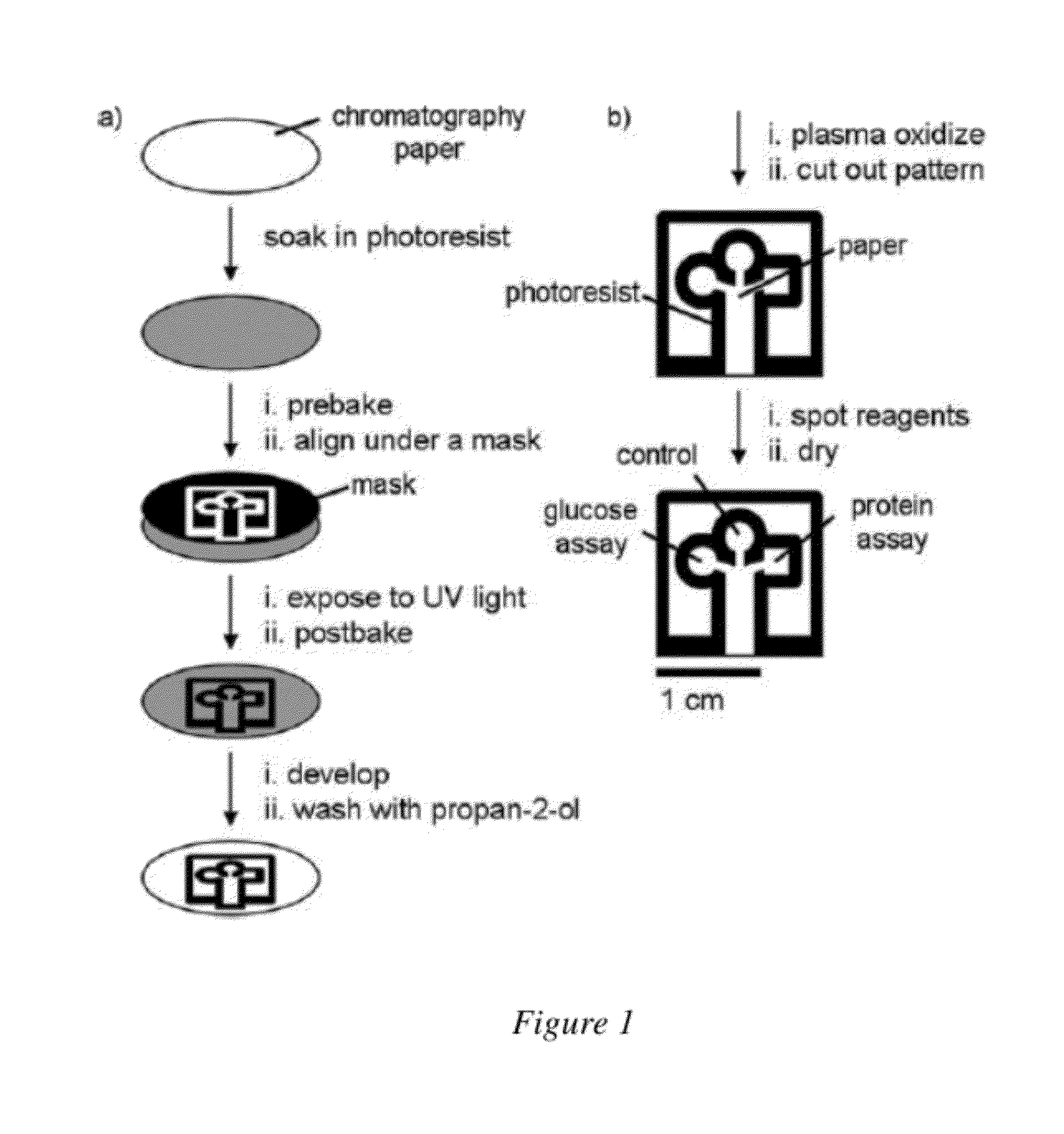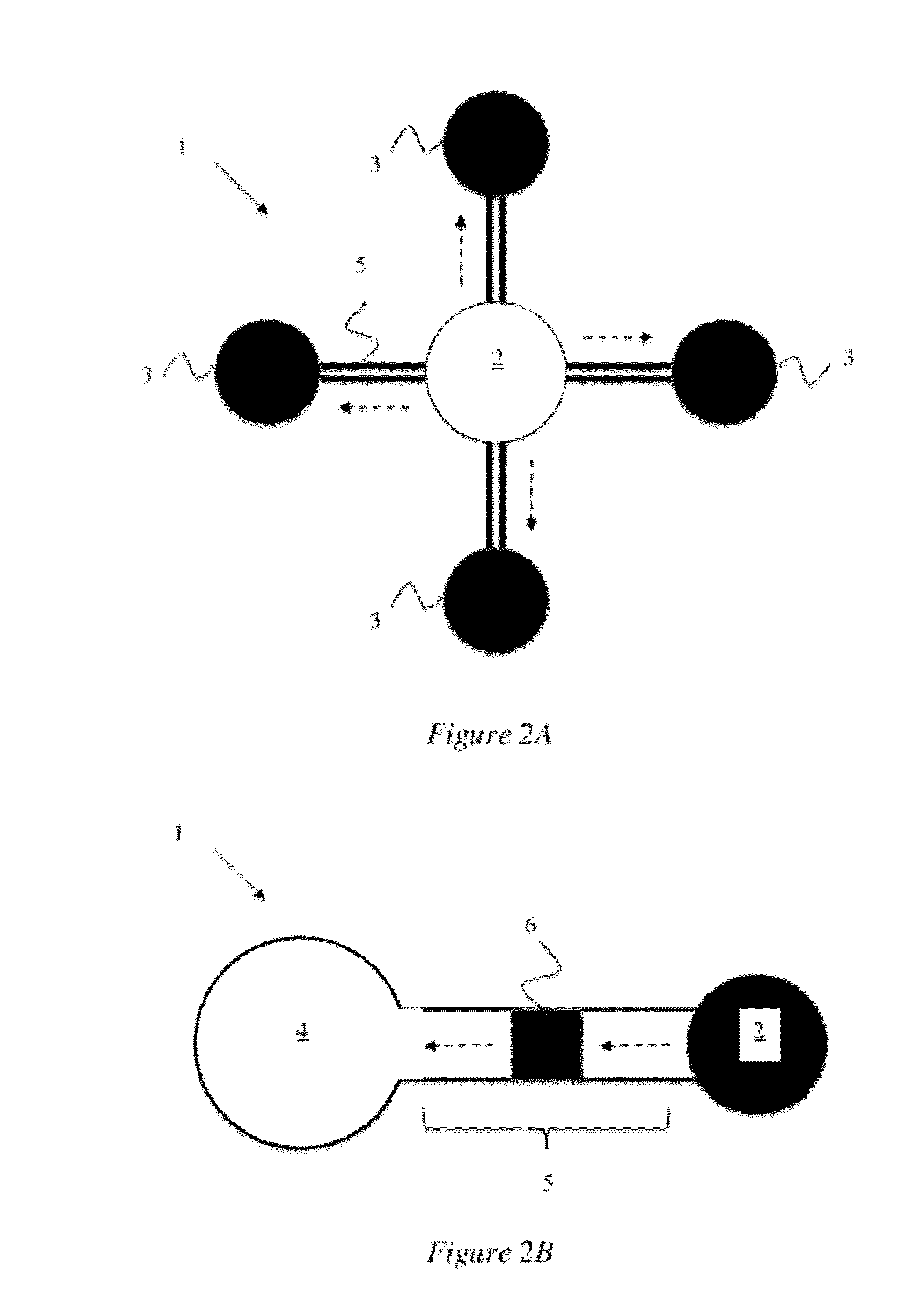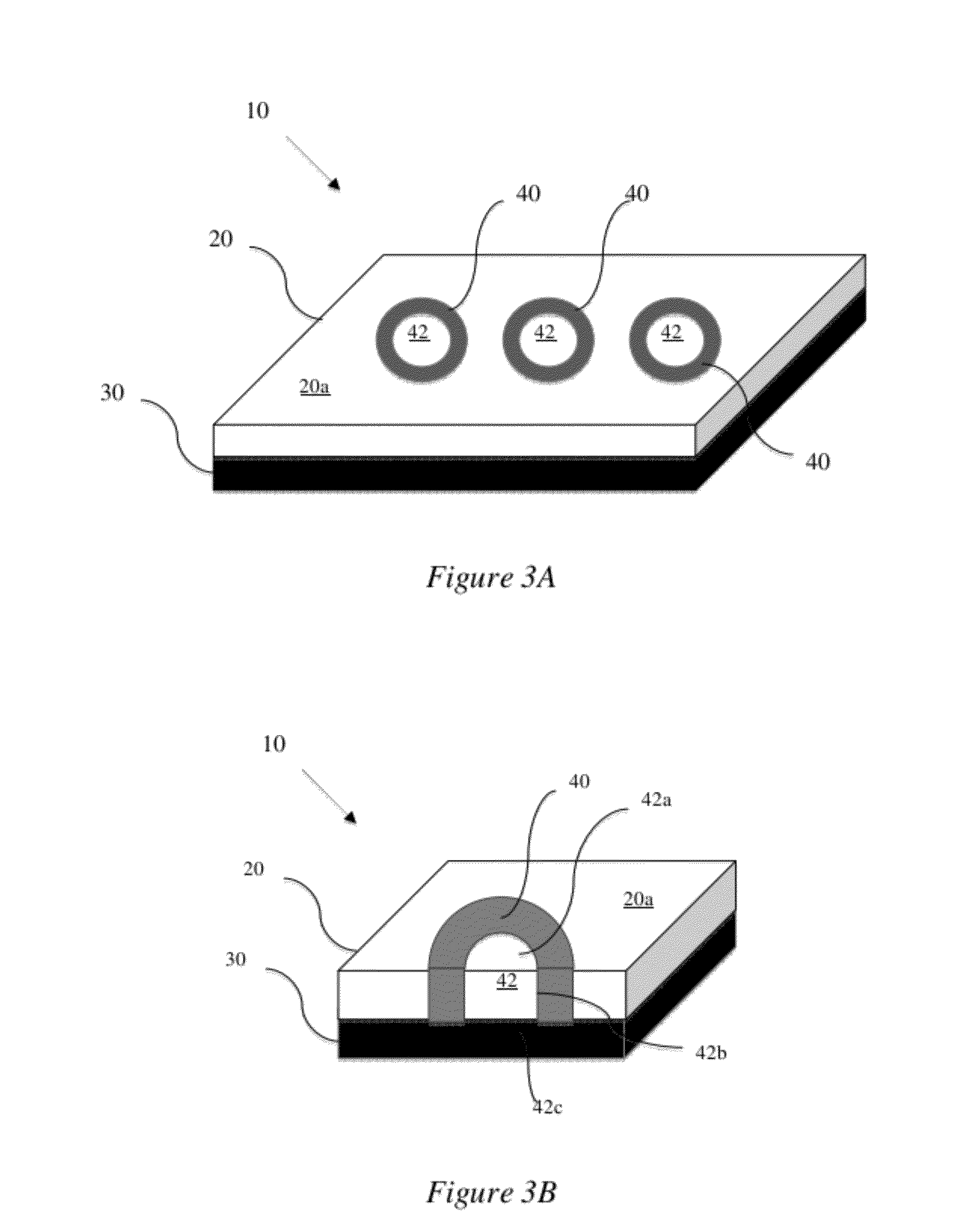Rapid Detection of Pathogens Using Paper Devices
a paper-based, pathogen-free technology, applied in the field of paper-based analytical devices, can solve the problems of requiring complex instruments, requiring tedious methods, and foodborne pathogens are a major public health threat and financial burden, and achieve the effects of simple, fast and simple analytical systems, and highly trained personnel
- Summary
- Abstract
- Description
- Claims
- Application Information
AI Technical Summary
Benefits of technology
Problems solved by technology
Method used
Image
Examples
example 1
Overview
[0080]A paper-based analytical device (PAD) for detection of L. monocytogenes has been fabricated. 5-bromo-4-chloro-myo-inositol phosphate (X—InP) provides a substrate for detection of the enzyme PI-PLC that is released on cell lysis. The combination of X—InP with the PAD allows for the successful integration of enzymatic assays into PADs for detection of enzymes released from pathogenic bacteria, such as PI-PLC. Thus, these two methods can be combined in an interdisciplinary manner to create a low-cost sensor capable of detection of L. monocytogenes. By utilizing additional substrates an array-based sensor can be created that is capable of detecting multiple critical pathogens from contaminated food and water samples in one hour or less.
[0081]A reproducible method for device fabrication that is scalable to high-throughput applications has also been developed. Photolithography methods can be used to define the flow channels for PADs as shown in FIG. 1. While this method of p...
example 2
Materials and Methods
Materials.
[0087]HEPES, bovine serum albumin, phosphatidylinositol-specific phospholipase C, β-galactosidase, esterase, 5-bromo-4-chloro-myo-inositol phosphate, chlorophenyl red β-galactopyranoside, and 5-bromo-6-chloro-3-indolyl-caprylate were purchased from Sigma (St. Louis, Mo.). Tryptic soy broth, yeast extract, and lambda buffer [100 mM NaCl, 8 mM MgSO4.7H2O, 50 mM Tris-HCl (pH 7.5)] were purchased from Becton, Dickinson and Company (Franklin Lakes, N.J.). Bacterial strains used here were: Escherichia coli O157:H7 SPM0000422 (Lawrence Goodridge Laboratory Strain Collection, obtained from USDA), Salmonella enterica subs. entrica serovar Typhimurium (ATCC 14028), and Listeria monocytogenes FSL CI-115 (1 / 2a, ILSI, human sporadic). MacConkey-sorbitol agar base, cefixime tellurite (CT) supplement, XLT-4 agar base, Tergitol-4 supplement, PALCAM agar base, and PALCAM supplement were purchased from Remel Inc (Lenexa, Kans.). Whatman #1 filter paper was purchased fro...
example 3
Assay Development
[0100]The optimal substrate concentration was established for each assay using only the enzyme (i.e. no live bacteria were used for this portion of the studies). Various concentrations of substrate / indicator reagent were added to the well device while the amount of enzyme and total volume of each well were held constant. The array of well devices was scanned after the enzymatic reactions were complete and wells had dried to generate a digital image and the grey intensity of each spot was measured. A plot of average grey intensity versus substrate concentration was generated, and a point of saturation for each assay was identified (FIGS. 7A-7C). The concentration of substrate at this saturation point was considered the optimal concentration for the system.
PUM
 Login to View More
Login to View More Abstract
Description
Claims
Application Information
 Login to View More
Login to View More - R&D
- Intellectual Property
- Life Sciences
- Materials
- Tech Scout
- Unparalleled Data Quality
- Higher Quality Content
- 60% Fewer Hallucinations
Browse by: Latest US Patents, China's latest patents, Technical Efficacy Thesaurus, Application Domain, Technology Topic, Popular Technical Reports.
© 2025 PatSnap. All rights reserved.Legal|Privacy policy|Modern Slavery Act Transparency Statement|Sitemap|About US| Contact US: help@patsnap.com



